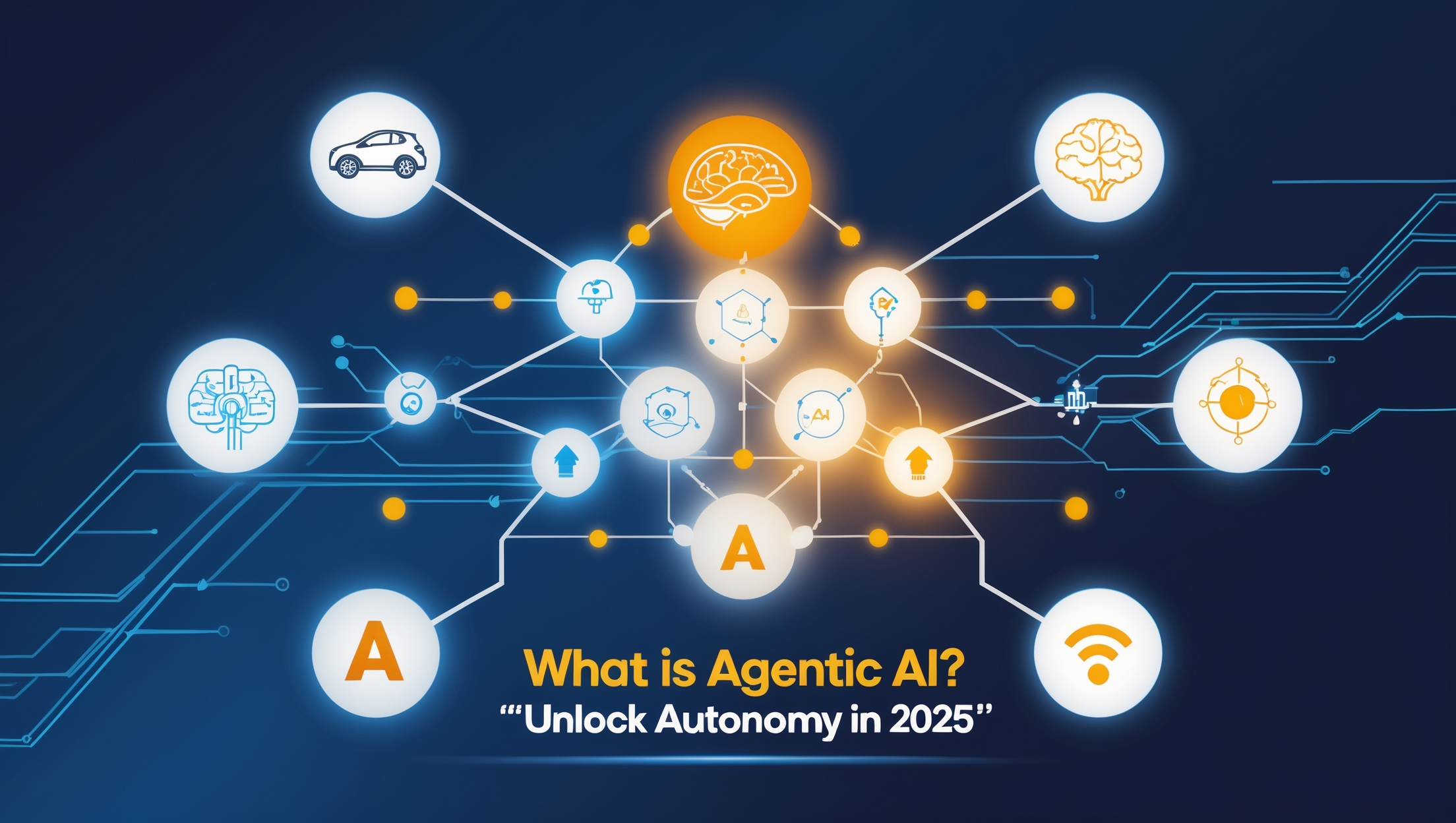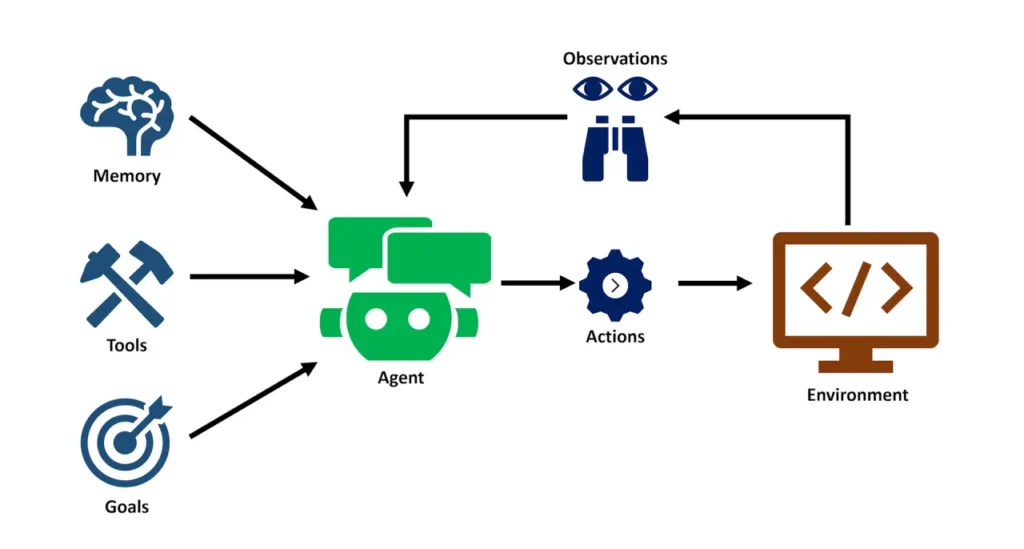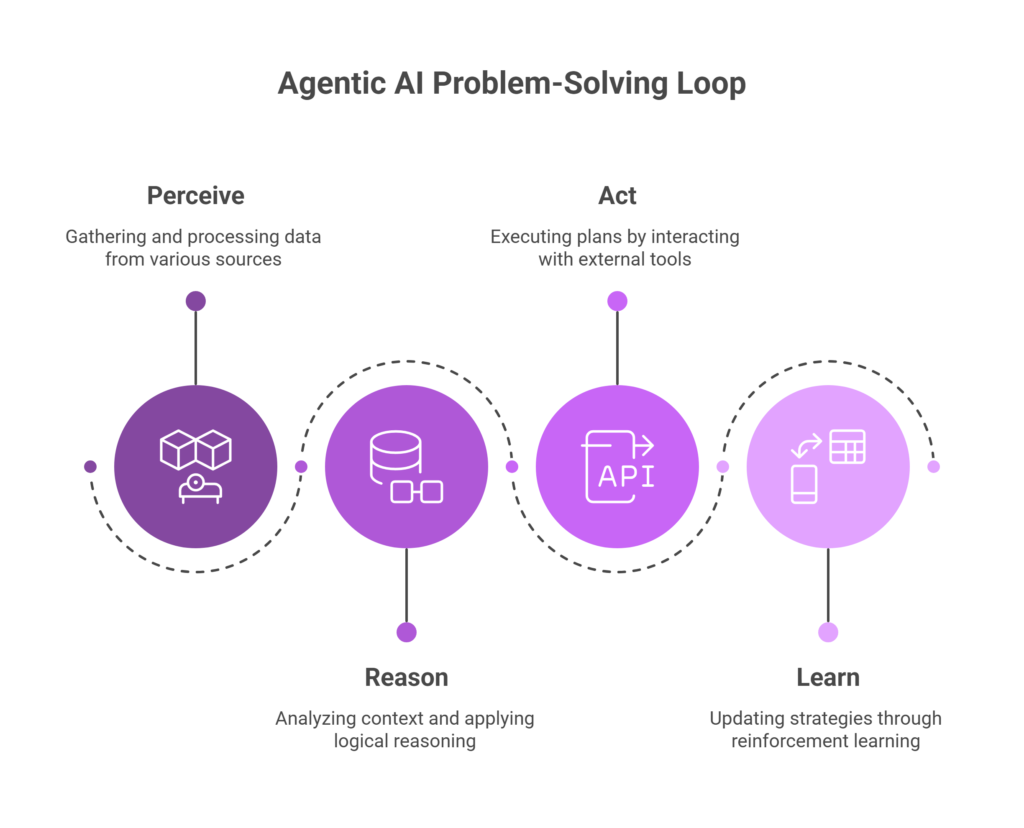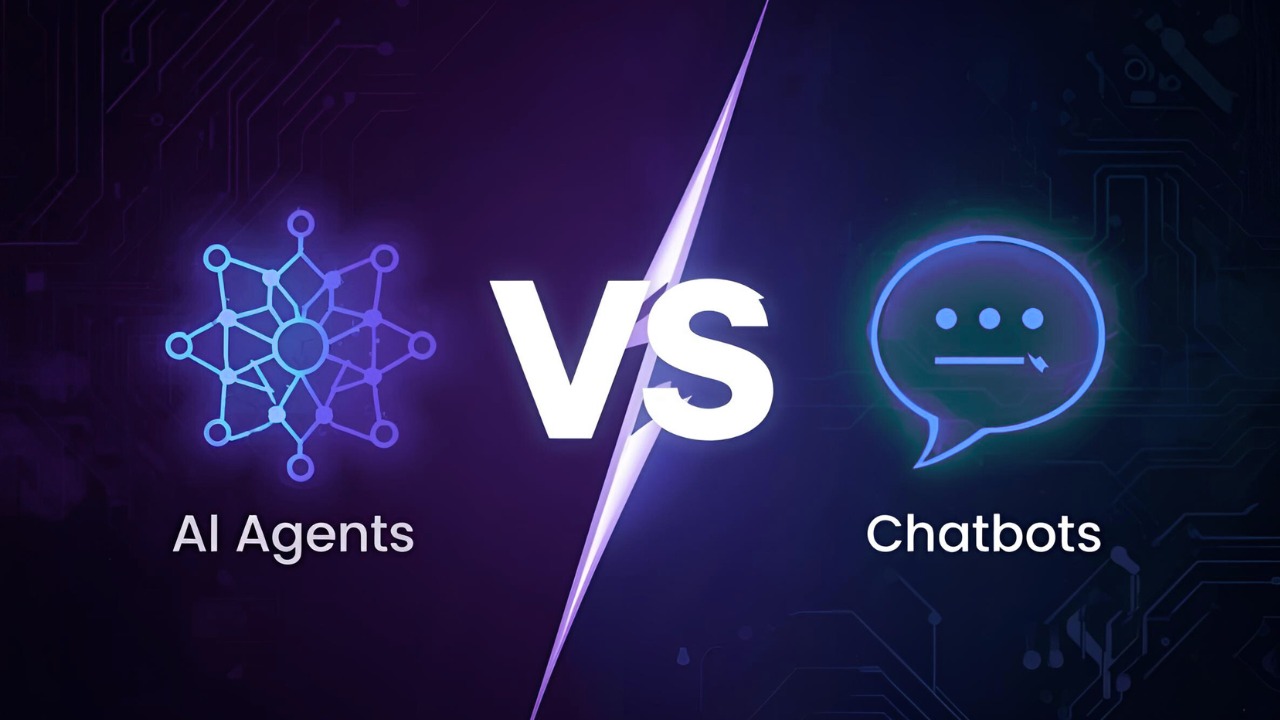
What Is Agentic AI: The Complete Guide of 2025
Artificial intelligence has entered a new era. Beyond merely responding to specific inputs or queries, AI is now gaining the capability to think, act, and improve independently. Enter Agentic AI, a paradigm-shifting development in autonomous systems that holds enormous potential for transforming enterprises.
Agentic AI isn’t just a technological advancement; it’s a groundbreaking tool reshaping industries. Whether monitoring patient health in real time or optimizing global supply chains, this new generation of AI is already transforming how businesses operate.
But what exactly is Agentic AI? How does it work, and what defines it? This guide dives deep into the concept, its unique advantages, and how businesses can start leveraging it to stay ahead in a dynamic landscape.
What Is Agentic AI?

Agentic AI refers to autonomous artificial intelligence agents capable of acting, reasoning, learning, and making decisions without constant human oversight. Unlike more reactive AI systems like chatbots or rule-based tools, Agentic AI can execute and adapt multi-step workflows to achieve defined goals.
It incorporates advanced reasoning techniques, large language models (LLMs), and real-time learning to ensure intelligent decision-making and task execution.
Key Features and Capabilities
- Autonomous Decision-Making
Agentic AI systems operate independently, powered by algorithms that allow them to manage workflows and adapt to changing scenarios (e.g., self-optimizing supply chains).
- Multi-Step Reasoning
These agents follow structured processes such as Perceive → Reason → Act → Learn. They can solve complex problems that unfold across multiple stages.
- Tool Integration
Agentic AI is compatible with APIs, databases, and enterprise software like IBM Watsonx Orchestrate. This enables seamless interaction with existing tools and systems.
- Continuous Learning
Through real-time feedback loops, these systems refine their methodologies to become increasingly effective over time.
Key Differentiator
Unlike chatbots, which merely respond to queries, Agentic AI executes actions and completes workflows proactively. For instance, IBM’s AI HR agents autonomously process leave requests and assist employees with policy-related inquiries, reducing manual intervention.
How Does Agentic AI Work? The Four-Step Framework

Agentic AI’s intelligence relies on a structured problem-solving loop. Here’s how it works:
1. Perceive
The system gathers and processes data from sensors, APIs, databases, or user input. For instance, it might extract relevant client details from CRM software during an onboarding process.
2. Reason
Utilizing LLMs (e.g., GPT-4) and Retrieval-Augmented Generation (RAG), the agent analyzes the context and applies logical reasoning to determine a solution.
3. Act
The AI executes its plan by interacting with external tools and systems. For example, it could autonomously verify insurance claims via API integrations. Guardrails ensure adherence to predefined compliance rules.
4. Learn
Using reinforcement learning or outcome analysis, the system continuously updates its strategies. For example, an AI agent might use A/B testing data to refine marketing campaign performance.
Agentic AI vs Generative AI: Decoding the Difference
While both Agentic and Generative AI are at the forefront of innovation, their roles and functionalities diverge significantly. Here’s a direct comparison:
| Aspect | Generative AI | Agentic AI |
|---|---|---|
| Primary Role | Creates content (text, images, code) | Executes actions and makes decisions |
| Autonomy | Requires human prompts | Operates independently |
| Use Case | Drafting documents, creating visuals | Running workflows, fraud detection |
Synergy Between the Two: Generative AI drafts an analytical report, while Agentic AI submits the report, makes necessary changes, and monitors performance metrics.
Top 5 Real-World Use Cases of Agentic AI
Agentic AI is not just a theoretical concept; it is already transforming industries at scale:
- Healthcare
AI agents autonomously monitor patients, track vitals, and recommend treatments in real time. For example, wearable health devices feed continuous data to AI-powered systems, guiding medical teams in creating tailored care plans.
- Customer Service
Agentic AI improves the speed and quality of customer support. For instance, IBM’s AI assistant for HR autonomously resolves 80% of employee inquiries, allowing teams to focus on more strategic tasks.
- Finance
Financial institutions use Agentic AI for real-time fraud detection and portfolio management. Systems allocate investments based on risk algorithms, reducing human error.
- Supply Chain
Platforms such as Nvidia’s AI Blueprints adjust logistics plans autonomously, using weather forecasts and demand spikes to reduce delays and optimize resources.
- Cybersecurity
AI agents identify potential cyber threats and patch vulnerabilities autonomously. NVIDIA’s agents, for example, run anomaly detection to safeguard organizational networks continuously.
Benefits of Agentic AI for Businesses

The integration of Agentic AI offers numerous advantages that can redefine business efficiency and profitability:
- Faster Workflows
Accelerates multi-step processes, such as customer onboarding and procurement approvals, by 50%.
- Cost Savings
Reduces reliance on manual labor and minimizes errors, lowering overhead costs.
- Scalability
Handles thousands of simultaneous tasks, enabling businesses to scale efficiently.
- Hyper-Personalisation
Provides tailored experiences for customers by analyzing and acting on specific preferences (e.g., dynamic pricing offers).
Challenges and Risks to Consider
While promising, Agentic AI is not free of challenges. Businesses must mitigate risks by maintaining proper oversight and policies.
- Security Concerns
Autonomous systems are susceptible to prompt injection attacks and data breaches.
- Bias and Fairness
AI decisions may inherit biases from incomplete or flawed training data.
- Human Oversight
Balancing autonomy with appropriate human control remains essential to prevent unintended actions.
- Regulatory Compliance
Organizations must align with standards like GDPR to ensure ethical implementation.
The Future of Agentic AI (2025 & Beyond)
Emerging Trends
By 2027, Gartner predicts that 40% of enterprises will employ AI agents for core business functions. The next frontier likely includes multi-agent collaboration, where autonomous systems execute high-complexity projects.
How to Implement Agentic AI in Your Business
Starting with Agentic AI might seem daunting, but a systematic approach can make the process seamless.
Steps to Get Started
- Assess Existing Workflows
Identify areas suitable for automation or enhancement.
- Invest in Integration Tools
Platforms like NVIDIA and IBM Watsonx make it easy to deploy Agentic AI systems.
- Pilot Projects
Begin small to refine processes before scaling.
- Adopt Best Practices
Ensure data security, set clear goals, and collaborate with AI solution providers.
Engaging with experienced AI consultants and solution providers like Empathy Technologies can ease this transition.
Why Choose Empathy Technologies for Agentic AI?
When it comes to finding Agentic AI solutions, Empathy Technologies sets itself apart with these core differentiators.
- Empathy-by-Design: We build emotional intelligence into the DNA of our systems.
- Ethical AI frameworks: Preventing bias, manipulation, and unethical use of AI tools.
- Bespoke solutions: Tailored to your unique business challenges.
Take the Next Step
Agentic AI represents the next leap in artificial intelligence, offering not just machine-powered efficiency but a human-centric approach to automation.
Are you ready to see what Empathy Technologies can do for your business?
Contact us for a demo today and start building an AI-powered future that truly cares.










Permalink